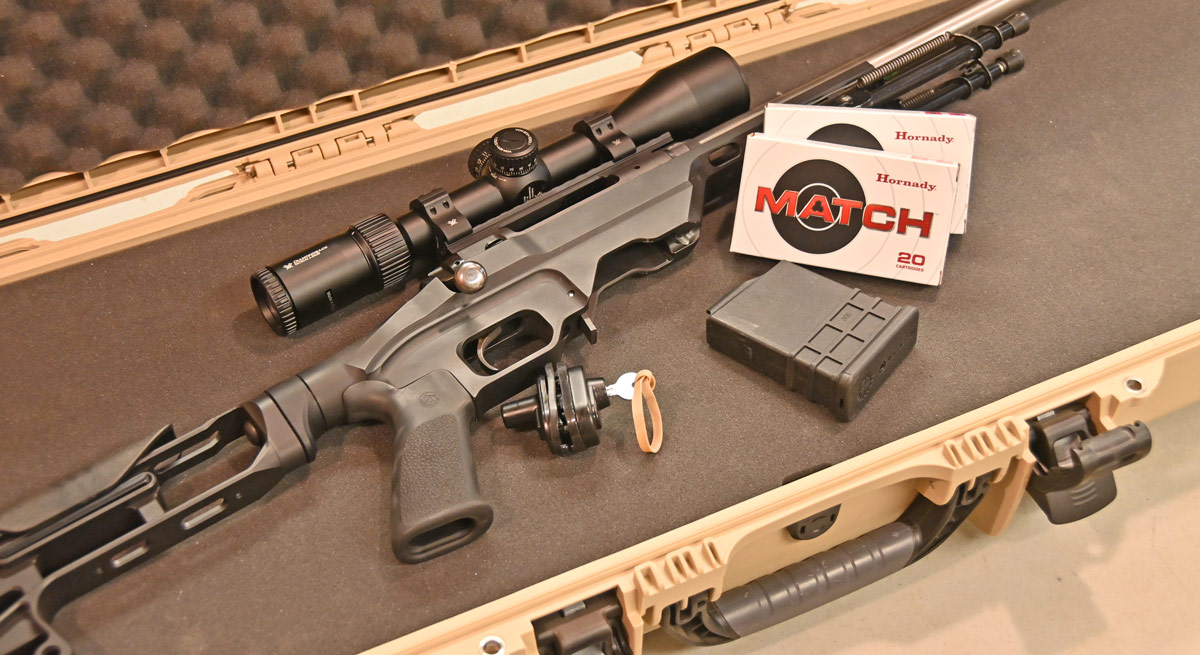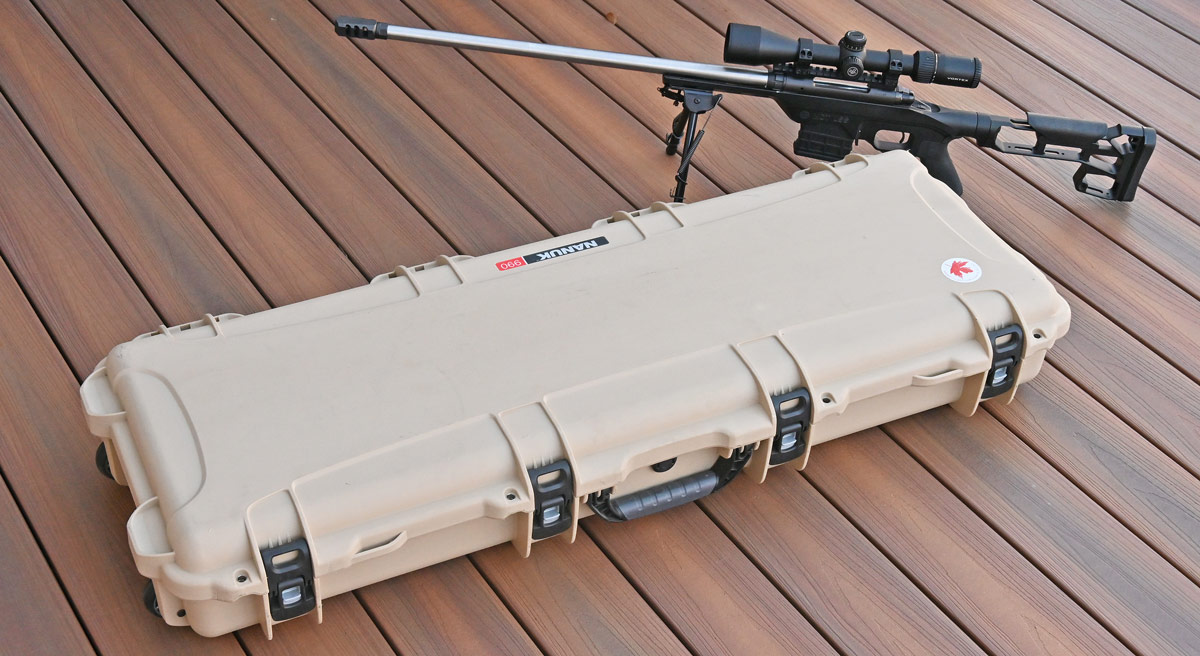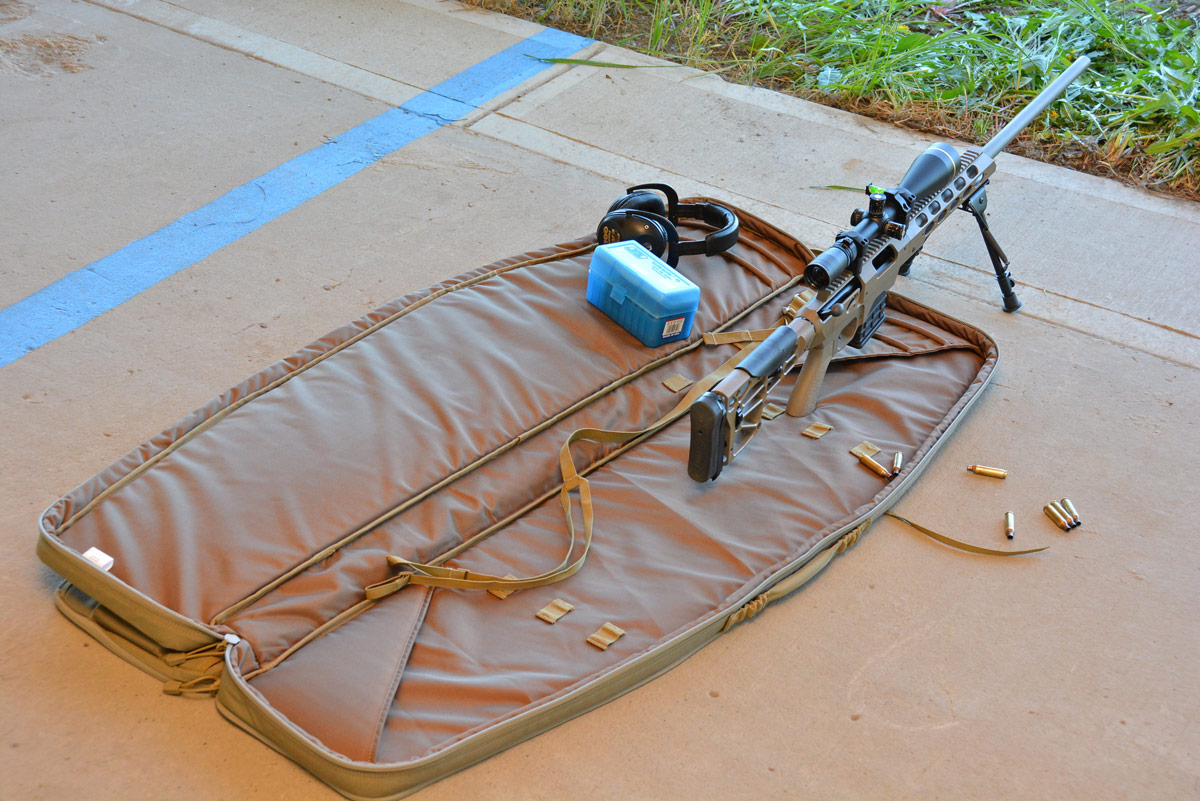Posted by Al Voth on 2022 Apr 28th
How to Safely Transport Firearms
Unless you happen to be one of the few who can walk out the back door of your residence to shoot a precision rifle, you'll need to transport that gun somewhere to use it. And even backyard shooters will eventually need to move their rifle to hunt, practice, or compete. Let's take a look at how best to transport them.
Our first consideration is all about legality and safety. There's typically no need for civilians to transport a big, heavy precision rifle that's loaded. Even when I carried one in uniform, at a minimum, we kept the chamber empty and a magazine in place when in transport. But even then, only if hands were on the gun, as in a helicopter. If it was in a case, it was always totally unloaded. Laws vary widely, so be sure to understand the requirements in your jurisdiction and any you might pass through on your travels. This includes the potential to have a disabling lock on the gun, and the case itself locked, common requirements for air travel. Do your homework on the laws and be safe in your actions.

Rifles should be unloaded when transporting, and legislation may require them to be locked.
Proper fit is our next concern, as precision rifles have some unique size requirements. A chassis system, a long barrel, a large scope with a tall elevation turret, and a muzzle brake all combine to make a long bulky assembly. Generally, a case about 52-inches long is required, with enough depth and width to handle the gun and the accessories that support it.
A purpose-built "vault" built into a vehicle is an ideal solution but impractical for most. This means we have two broad choices available in the way of gun cases, soft and hard. Each has its place, with hard cases obviously providing the most protection. That makes these the only kinds of cases to consider for air travel, where rough handling doesn't even begin to describe what the rifle might be subject to.
But not all hard cases are quality products. A good rule of thumb is to look for an Air Transport Association (ATA) Specification 300 Category 1 rating. This is the highest shipping container specification of the ATA and ensures a hard case is worthy of air travel. Beyond that standard, there are additional military specification standards and American Society of Testing and Materials (ASTM) standards for drop, vibration, and rainfall. A case meeting these standards will provide the protection you're paying for when you invest in a quality hard case.
Pro Tip: Look for an Air Transport Association (ATA) Specification 300 Category 1 rating

Quality hard cases are your best bet for protecting a rifle while in transport.
I've used all sorts of hard gun cases over the years, from flimsy plastic clamshell versions to steel cases apparently designed to be bombproof. While they have all worked to some degree, these days, when I need a hard gun case, I reach for the Nanuk brand. Their long gun cases are the best compromise of weight, protection, and ease of handling I've seen. No, they aren't cheap, but they are quality and should last through a lifetime of use. Their long gun cases meet all the ATA and ATSM standards I've listed and more.
Soft cases come in various shapes and sizes, with many different features. However, a few constants need to be present in any case worthy of consideration. That list includes things like a quality zipper, enough padding to afford reasonable protection, and some room for ancillary equipment.

It takes a big case to enclose and protect a modern chassis rifle
There are numerous excellent soft gun cases available, and although they don't provide the protection of hard cases, they have other advantages. Many are large enough to swallow two guns or a single gun with support gear such as a spotting scope and tripod. Look for a model which opens flat, transforming into a shooting mat, and perhaps with options for locking in and pre-loading the bipod when shooting your rifle. Backpack-style carrying straps are also built into many cases, which frees up the hands for additional carry or administrative tasks. A blizzard of MOLLE connection points is sometimes useful, and the hook and loop material stitched to the outside is a great place to put those fun morale patches we all enjoy. Just like in hard cases, these features come at a cost, and we are now getting close to the price point of good hard cases. That's just the reality of quality gear.

Some soft gun cases offer the versatility of being usable as a shooting mat.
If you own guns, you're going to travel with them. Whether it's a short trip to the local shooting range, hunting, or flying across the country for a big match, we are all responsible for our firearms, so transport them safely and protect them with a good case.
ABOUT THE AUTHOR
Al Voth calls himself a "student of the gun." Retired from a 35-year career in law enforcement, including nine years on an Emergency Response Team, he now works as an editor, freelance writer, and photographer, in addition to keeping active as a consultant in the field he most recently left behind—forensic firearm examination. He is a court-qualified expert in that forensic discipline, having worked in that capacity in three countries. These days, when he's not working, you'll likely find him hunting varmints and predators (the 4-legged variety).


 EUR
EUR
 Canadian Dollars
Canadian Dollars
